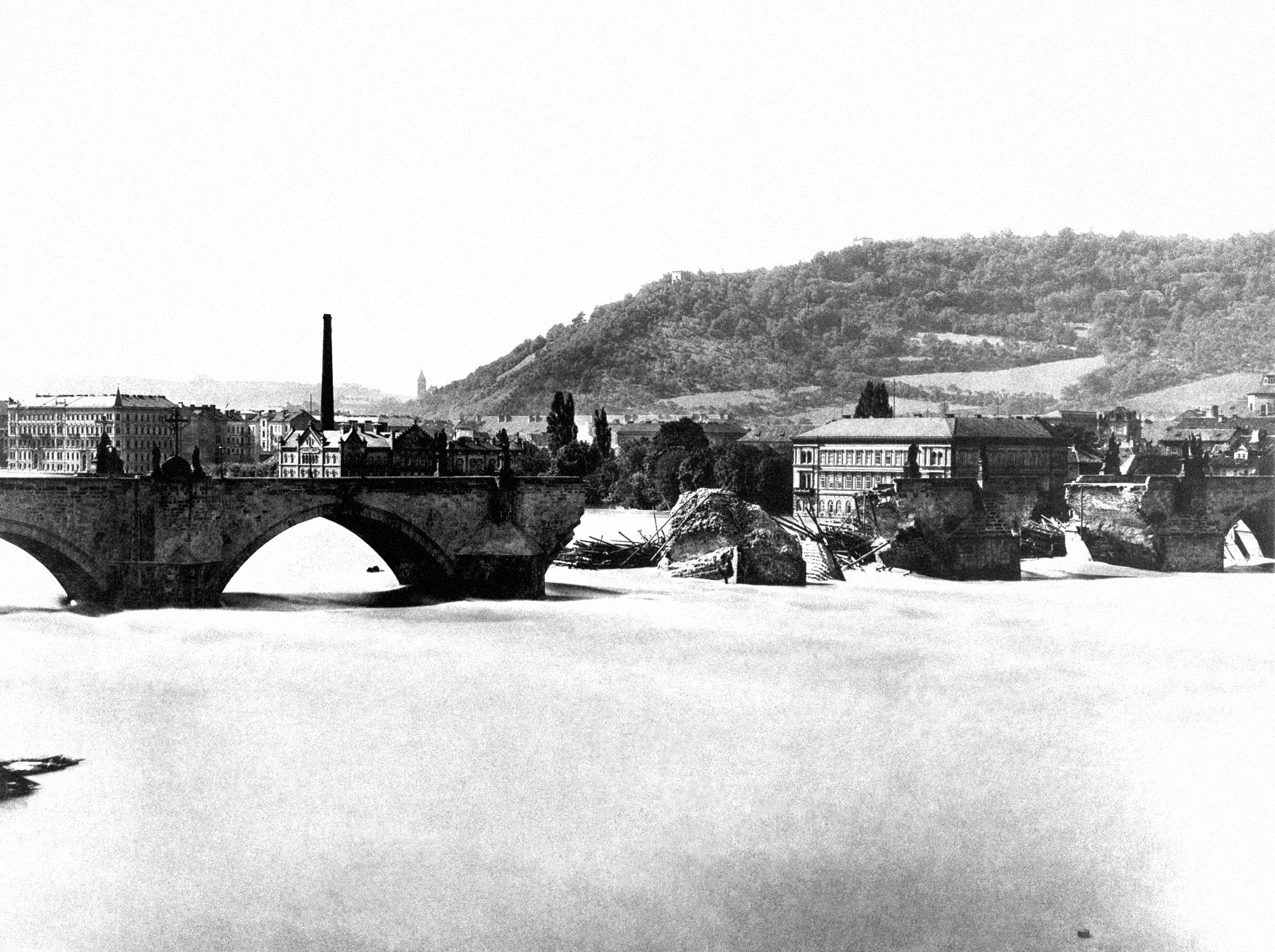Half past five in the morning on September 4, 1890. The flooded ruins grip the pillars of Charles Bridge in Prague so powerfully that the Gothic gem cannot withstand the pressure. Two arches collapse. Four hours later, another crashes. At that moment, several people end up in the predatory waters of the flooded Vltava. They will perish. However, they are not the first victims of one of the biggest floods that Prague experienced 130 years ago.
The flood wave hit Prague the day before. Two hours after midnight on September 3, 1890, the water level was more than two meters higher. Before noon, for example, in Podolí, they even measured five meters above normal. Already at night, twenty soldiers drowned in Karlín, dismantling a training pontoon bridge. They were swept away by logs from shattered rafts.
At that time, the Great Water flooded almost a third of Prague, to four thousand houses. The flood culminated on the evening of September 4, when it had a flow rate of 3975 cubic meters per second. The great flood plagued Prague in the days that followed. In the end, it claimed several dozen human lives.
For more than a hundred years, such a massive element did not hit the capital. Until 2002. This was the largest flood in history in the metropolis, culminating in a flow of 5,160 cubic meters per second. The years 1890 and 2002 were quite similar in both cause and extent. Both floods were caused by rain, which had nowhere to soak after the wet August. The flooded area was roughly the same. This is despite the fact that in the 20th century the Vltava cascade “bound” the river.
– .


:quality(80)/cdn-kiosk-api.telegraaf.nl/42d70a78-ee92-11ea-8ab0-02d1dbdc35d1.jpg)